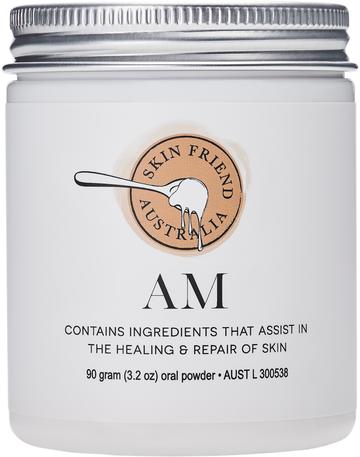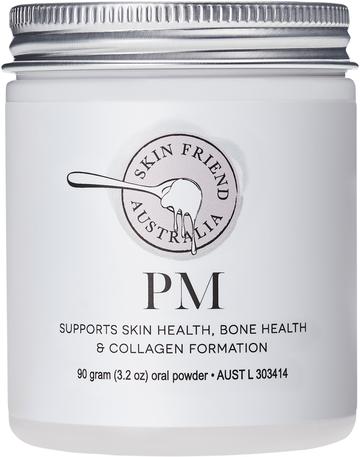Itchy dozen signs you have topical steroid withdrawal
What is topical steroid withdrawal?
Topical steroid withdrawal syndrome (TSWS or TSW) can occur when a person abruptly stops using topical steroids on their skin after years of frequent use.
While short-term use of topical steroid/cortisone appears to be harmless (and sometimes necessary in severe cases), long-term use can have side-effects. The side-effects can occur with increased frequency and severity depending on how long you have used topical steroids.

Is topical steroid withdrawal a new fad?
Topical steroid withdrawal may seem like a new fad as it only recently gained wide-spread attention. Many doctors question whether the condition even exists. However, topical steroid addiction was identified back in the 1970s, according to a study called "Steroid addiction" published in the International Journal of Dermatology in 1979 (nearly 40 years ago).
Today, topical steroid withdrawal is recognised by some dermatologists, doctors and large associations, including the National Eczema Association. However, further education and awareness are necessary so sufferers can receive the support and advice they need.
Photo: TSW before and during treatment
The itchy dozen signs you have topical steroid withdrawal
While all symptoms may not be present in one person, here are the twelve most common signs of topical steroid withdrawal:- Worsening of your rash and increases redness as you skin is no longer responding to topical steroids and other drug treatments.
- Skin thinning - it crinkles easily and you can see underlying blood vessels.
- Skin depigmentation or dark pigmentation - seen as either white patches on the skin or dark brown/grey areas of the skin, commonly seen near the knees, elbows and on the face, but can occur anywhere topical steroids are used.
- Stretch marks on the skin (aka. atrophic striae) - these can look like stripes across the skin and they are a sign your skin is low in zinc and other minerals.
- Skin swelling - your skin can look puffy and swollen, and it can be tender to touch.
- Burning and stinging of the skin - especially when you apply topical products such as skin creams and cleansers (even the gentle ones).
- Pimple-like bumps (papules), nodules and pustules - bumps appear and look like acne. Also known as 'steroid acne' or 'pustular psoriasis'.
- Extensive wrinkling of skin (premature skin ageing) - some patients call this 'elephant skin', especially seen above the knees, arms and hands but it can occur anywhere on the body.
- Loss/thinning of hair and/or loss of eyebrows - your hair may fall out in clumps.
- Cracked skin - especially on the corners of the mouth, lips and hands.
- Frequent skin infections - requiring antibiotic treatment.
- Increased itch - the itch is getting worse and there seems to be no relief in sight.
Symptoms reverse and improve over time, especially with nutritional support which speeds up the recovery process.
According to the National Eczema Association report:
“Topical Steroid Withdrawal (TSW, sometimes called “topical steroid addiction” or “Red Skin Syndrome”) can occur when topical corticosteroids (TCS) are inappropriately used or overused, then stopped. It can result from prolonged, frequent, and inappropriate use of moderate to high potency topical steroids. It is thought that adult women who blush easily are a population particularly at risk. Very few cases have been reported in children, but no large-scale studies have attempted to quantify the incidence.”
Burning, stinging, and bright red skin are the typical features of topical steroid overuse and withdrawal. The signs and symptoms occur within days to weeks after TCS discontinuation.
How soon do symptoms of TSW appear?
It depends on what strength of product you are using. For example, high strength steroid creams can trigger side-effects quicker than low strength. Long-term use can be considered 1-2 years of semi-regular use. Many patients I have seen at the Eczema Life Clinic, report having used steroid creams, saying "I have grown up using them". In some cases patients reported use of regular topical steroids/cortisone for eight, ten, fifteen and sometimes 20+ years before stopping use.
How to prevent topical steroid withdrawal?
While short-term use of topical steroids may be necessary, especially if you have a small child suffering with eczema (and unable to sleep), here are some tips for when you are ready to stop using steroid creams:
1. Don't go cold turkey when coming off topical steroids
This means slowly cutting down on your applications, rather than stopping suddenly. For example, use a lower strength steroid, then only use it every second day for a week, then every third day for two weeks, and so on until you are applying them once a week. After about a 6 weeks of slowly cutting down on topical steroids, stop using them.
2. Feed your skin with nutrients
It's important to give your body what it needs during this time of hormonal imbalance and healing. TSW can take a couple of years, or more, if you do not have extra nutritional support.
Nutritional support reduces the risk of loss of hair, eyebrow loss and "elephant skin" and it helps patients with TSW recover faster.
People with TSW can become sensitive to a range of chemicals including salicylates, preservatives, food additives, amines and MSG. So they should eat a diet low in chemicals such as The Eczema Diet.
Top nutrients for Topical Steroid Withdrawal
Using nutrients supplied from your diet and supplements, the body repairs and creates new skin cells deep within the skin. It takes about 28 days for new, healthier skin cells to travel to the surface and appear as new skin.
The nutrients required by your liver to detoxify steroids, toxins and hormones include magnesium, vitamin B6 (and other B vitamins), molybdenum and zinc. However, if your liver is low in these nutrients, the deactivation process does not occur so the toxins are released back into your bloodstream. This is why TSW can take years to subside. I usually prescribe Skin Friend AM or the Skin Friend Kit to help speed up the recovery.
For TSW sufferers who have poor sleep or insomnia, itchy skin, anxiety, depression, eczema and/or prematurely aged skin I prescribe Skin Friend PM which contains a highly alkaline powder form of calcium. It can also temporarily dampen the itch.
Products
At Eczema Life, we recommend nutritionist Karen Fischer's low food chemical program (The Eczema Detox) along with additive-free supplements for skin health and wellbeing. Click on the images to view more details:






